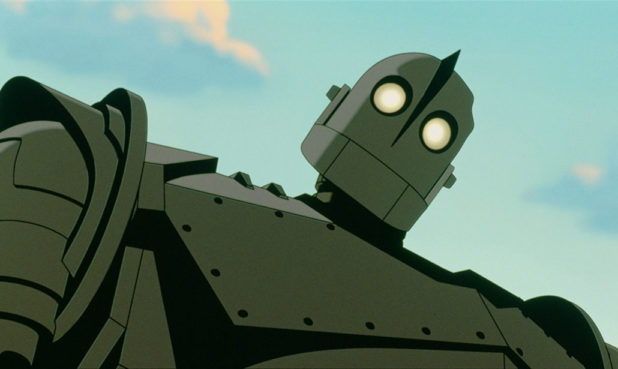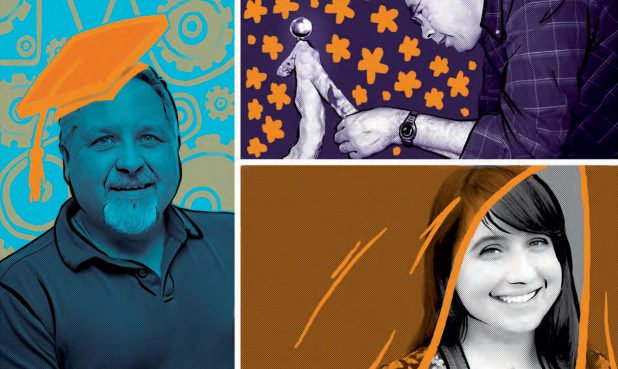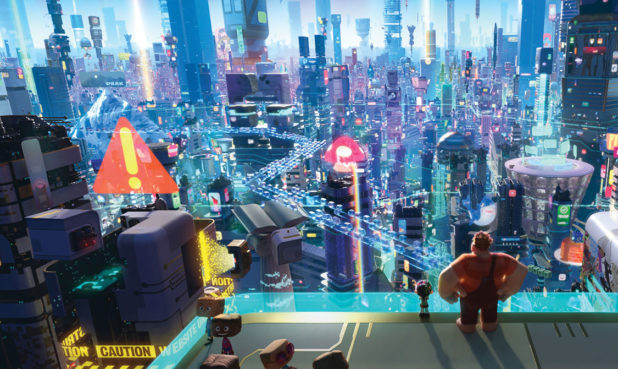After the success of Frozen, the filmmakers were confronted with a lingering question—Where did Elsa get her powers? For inspiration, the development team began exploring folktales from Norway and Iceland: “We started seeing this deep mythology and these deep roots in magic of nature,” says Director and Writer Jennifer Lee. “We started to see a story that felt like it was always there.”
This journey of discovery leads the characters out of Arendelle and into an enchanted forest where they meet Gale—a fluid and beautiful wind spirit. “The wind was the most important of the anthropomorphic spirits that came about in a lot of the folklore,” says Lee.
There was only one catch: How do you imbue an invisible character with personality? How do you visualize something that you can’t see?
Facing the Wind
“How do I draw wind?” wondered Bill Schwab, Art Director Characters, when he first tackled the concept of Gale. Inspired by the setting of the enchanted forest, he set about using sticks, leaves and debris to describe Gale and to envision how the wind spirit would interact with other characters.
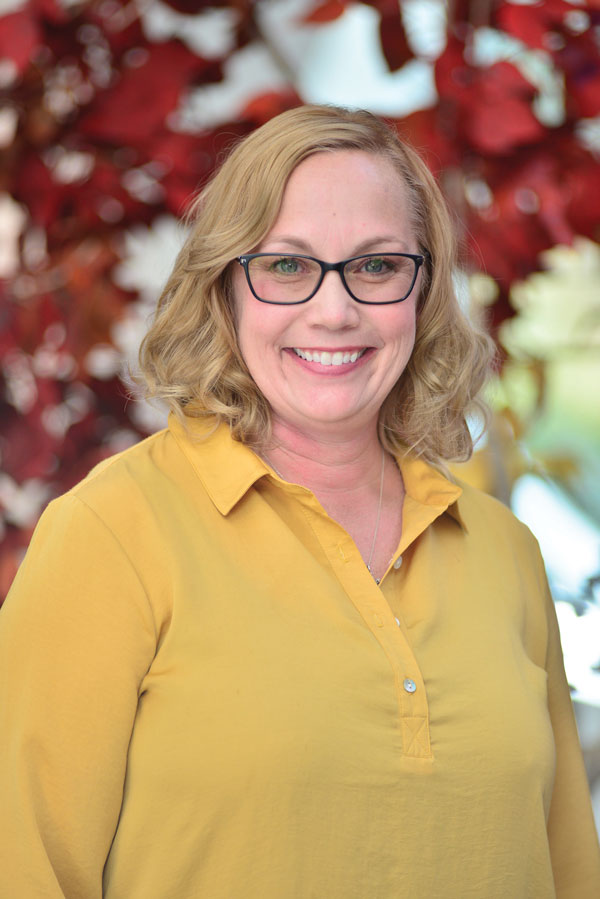
“The real challenge was the new characters and the fact that there had to be so much collaboration between departments… There were lots of ideas thrown out in the design process.”
– Head of Animation, Becky Bresee
“The real challenge was the new characters and the fact that there had to be so much collaboration between departments,” says Head of Animation Becky Bresee. “There were lots of ideas thrown out in the design process.”
The animation team started to run tests on how the leaves could move to show Gale’s personality with the first trials inspired by Schwab’s drawing of Olaf and Gale interacting. Animation Supervisor Trent Correy animated the scene then did drawovers to help inform the effects artists and seamlessly integrate the leaves that were hand animated with the ones done by effects.
Heads of Animation Tony Smeed and Bresee questioned whether Gale always needed to carry debris to be identified in the scene. In the script, Jennifer Lee had written that upon meeting, Gale gives Elsa a hug, so the team began exploring what that interaction might look like in collaboration with tech animation, the department in charge of hair and cloth simulation.
“There’s a bit of pantomime—a lot of the animators draw first to indicate what the hair would be doing, what the cloth would be doing so that when we went into dailies the directors had an idea of the intention,” says Bresee. “It was a big blend between our two departments.”
In another example, Gale comes through the window of the palace and sweeps through the bedroom. Correy along with Character Technical Director Cameron Black created a test where Correy would animate the Gale rig interacting with the bed, do some drawovers to help show what the performance might look like, and between the rig and drawings, tech animation would come up with simulations. “In the end, we can pull the Gale rig out and what you’re left with is this feeling of wind blowing through the sheets,” says Smeed.
When Story Artist Sylvia Lee begins working on a sequence, it usually begins with a conversation. The story team will read the script and the directors, in this case Jennifer Lee and Chris Buck, will identify specific beats they’d like to see within the scene. The artists return back to their desks and begin roughly sketching out initial ideas.
“It was amazing to see my very graphic, 2D representation executed into something that looks like you could actually wear it.”
– Visual Development Artist Brittney Lee
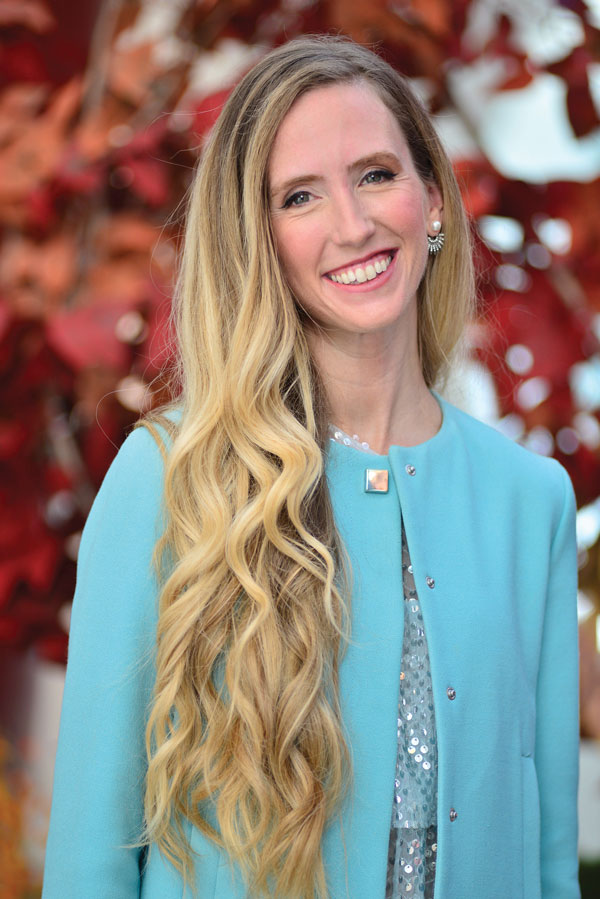
“We usually get a week to work on our scenes, then we pitch in front of the story team and get feedback,” says Sylvia Lee. “You try to address [notes] in another week then pitch again. When it’s good to go, you send it to editorial.”
The process is straightforward, but the artistry comes from the personal interpretation often drawing from one’s own life. One scene Sylvia Lee worked on was a flashback where Anna and Elsa’s mother sings them a lullaby. Lee drew from her experiences with her own mother, trying to channel how safe Lee felt when she saw her mother’s loving gaze—infusing her drawings with authentic emotion.
Other considerations included whether the audience would we be able to track Gale through a scene, zooming back and forth. The animation team also needed environmental props for Gale to interact with and to anchor the movements. Normally, the environments team works later in the pipeline but, in the case of Gale, both departments had to collaborate much sooner in order to ensure the various props where put into place so that the animation team could clearly depict Gale’s personality through these exchanges.
Getting the right performance out of Gale was another challenge that required a creative technical solution. Animators, technical directors and software engineers met twice a week for almost a year to talk about ways to streamline the rigging process, which led to the development of a new tool called Swoop. “We animate Gale by animating the path on which she travels on,” explains Software Engineer Hannah Swan. The intuitive tool incorporates two major components: the shape of the path (how Gale moves across the screen) and the timing of the path (where it lingers, how long it takes to zip from place to place). “We wanted to make a tool that is easy to use, easy to experiment with on the performance, and easy to change,” she says.
Rather than dialing in numbers to create the rig, the new tool allowed the animators to quickly draw a curve or a path for the leaf, or whatever else was attached to it. The artists could lock off segments using anchors and manipulate small sections. The idea was to streamline the number of steps it took to complete the rig and speed up the creative process, says Swan. They also created nudge and smudge tools to make it easier for the animators to manipulate the path and applied the functionality in virtual reality so an artist could create a path and see how it moved while in the respective environment.
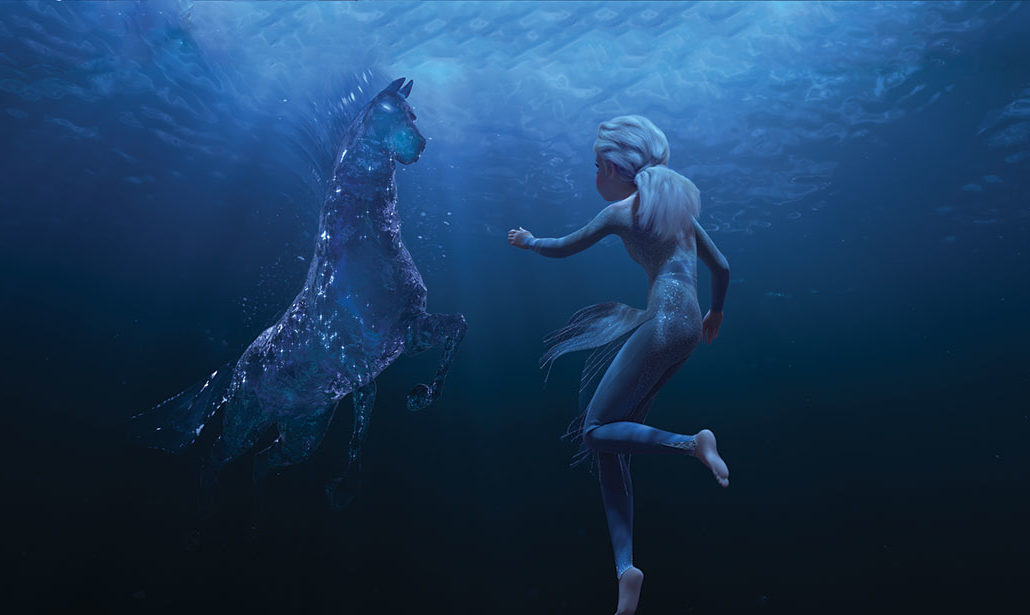
Opportunity Nokk
While Gale’s character required collaboration and multiple tests, another spirit known as the water Nokk provided its own set of challenges. The origin of the Nokk or Nixie, as it’s sometimes called, is a shapeshifter from old Norse tales that often takes the form of a horse— one that can grow as large as you need it to cross the water but might drown you if you aren’t true of heart. “The concept of a water spirit was really intriguing to me,” says Jennifer Lee. “Elsa is connected to water in a different way; there’s a fundamental principle in water that has to do with life.” The idea of creating a horse made of water that moves below and above the surface of the sea presented a set of unique issues but Lee knew the team could handle the challenge: “There hasn’t been one thing we’ve thrown at them that they said ‘no’ to.”
Illustrator Annette Marnat began exploring the shape of the horse—how much water was needed to describe it and how abstract it could be. Then they explored the interaction between the Nokk and the dark sea, imbuing the mane and tail with the qualities of water. “We were trying to figure out how long the mane would be—would it be more ethereal? Would it feel more like hair?” says Bresee of the conversations that occurred during the initial phase of exploration.
“The tail and mane were two main areas that we could inform the viewer that this was a creature made of water,” adds Head of Effects Animation Marlon West. “We liked this curtain-like, fountain [effect].”
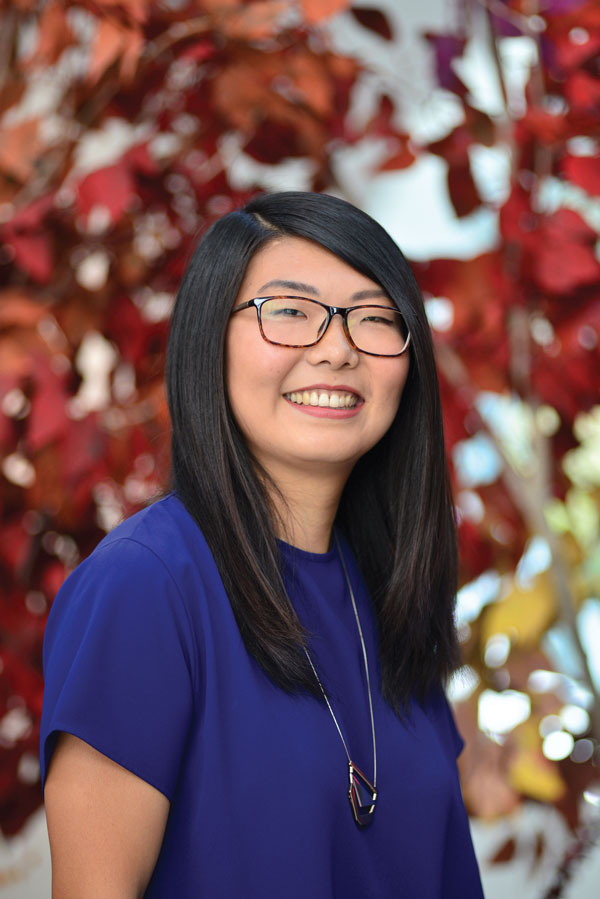
“The ocean is a big challenge—it ranges from calm to chaotic… We had to find contact points on the [surface] and generate splash from there… It’s critical that all the effects support the storytelling”
– Effects Animator Joyce Tong
Next, Animation Supervisor Svetla Radivoeva studied a horse’s anatomy and locomotion to shape the performance of this warrior horse, a wild stallion that needs to be tamed. She quickly learned that a horse’s ears scan around like human eyes—wherever the ears are turned, that’s where the horse is looking. Ears can also show emotion, for example, folded back in anger.
But since the horse is made of water without a solid surface on the face, they did a test to see how expressive the Nokk could appear. They also examined the hooves taking off from the surface of the sea. Radivoeva applied the concept to the CG puppet animated in Maya to stretch the hooves so the effects team could build on top and create the appearance of the hooves breaking up into water as they lift off the surface of the sea. Some tests made the legs too wobbly and affected the silhouette and performance. It took collaboration to find the right balance.
Moreover, the horse made of water gallops on top of another moving surface—waves of the dark sea. “The ocean is a big challenge—it ranges from calm to chaotic so the performance is very different. We had to find contact points on the [surface] and generate splash from there,” explains Effects Animator Joyce Tong. “We built a very basic setup for the artists to use [for] a rough first pass. For the last 20 percent, the artist has to dial the settings and generate additional effects elements.”
“The level of animation we do is intense and expensive. We can experiment a lot more [by] being more efficient in technology and in our processes.”
– Chief Creative Officer Jennifer Lee
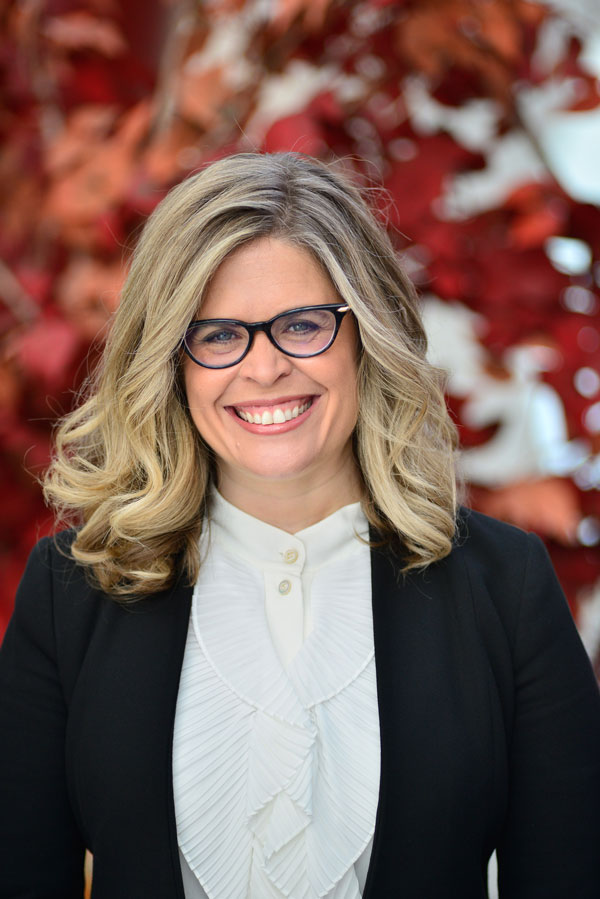
The effects team worked closely with tech animation to ensure seamless collaboration. Sometimes, the splash patterns or the mane might detract from the focus and lead the audience’s gaze astray. At times, the result wasn’t ideal: The mane might flip across the Nokk’s head and obscure his face. The shot would be sent back to animation to reanimate the head and motivate the mane to flip to the other side of the head. “It’s critical that all the effects support the storytelling,” notes Tong.
As the horse gallops underwater, the team worked on how the water breaks and how the bubbles emanate from the movement, but they had the added obstacle of a clear, liquid creature in the water. “You have to do a lot of steps to isolate the Nokk from all of the water but still have it read as made from water,” says Tong. “If it’s just a regular water surface you’ll see a lot of reflection and refraction, so it’s hard to read the shape. We have to use a volume to block out the light, so they’re still see-through but not transparent.”
Moreover, every shot was scrutinized by the lighting department: “We’re not just taking a setup and rendering it with different cameras, we’re making artistic decisions per shot,” says Lighting Supervisor Amy Pfaffinger. Working on darker scenes is challenging for the lighting department, also determining the motivations of the source of the light. “Sometimes you have to decide your strategy,” says Pfaffinger. “The character might [realistically] be [in the dark] and nobody wants to see that in a movie.” For the darker scenes, the team explored movies such as Star Wars for inspiration.
Lights are placed to provide more than readability of the character; they direct the audience’s gaze to the action. Something might catch the eye that is technically correct, for example, an interesting effect like a sparkle in the water, but takes attention off of the real focus of the scene. You might bring the intensity down in those areas while lifting the focus of other areas to align with the direction of the storytelling.
“The work we’re doing now is closer to the complexity of visual effects,” adds Pfaffinger.
Indeed, more than 75 percent of the film had effects in it, putting a bit of a strain on the budget but once again the filmmakers were able to come up with creative solutions: “If we say the scene is critical, then we find other ways,” says Jennifer Lee. “Sometimes you have a shot where there are six people in it—if you limit it to two, you just saved three weeks in animation.”
She credits having artists coming on the project early to iterate a lot sooner with helping to improve the process and allow for time to explore the story, something she’d like to see implemented in future productions. “How do we open this up so creativity can be as free as it needs to be in the beginning?” she says. “There is no shortcut to what it takes to develop a strong film.

